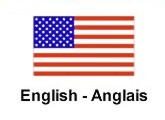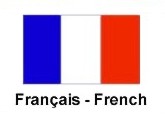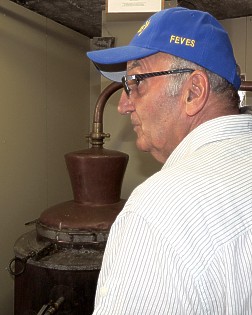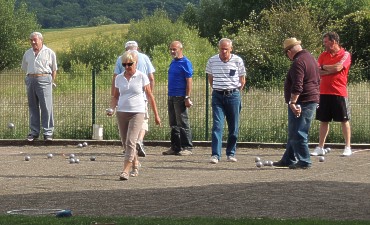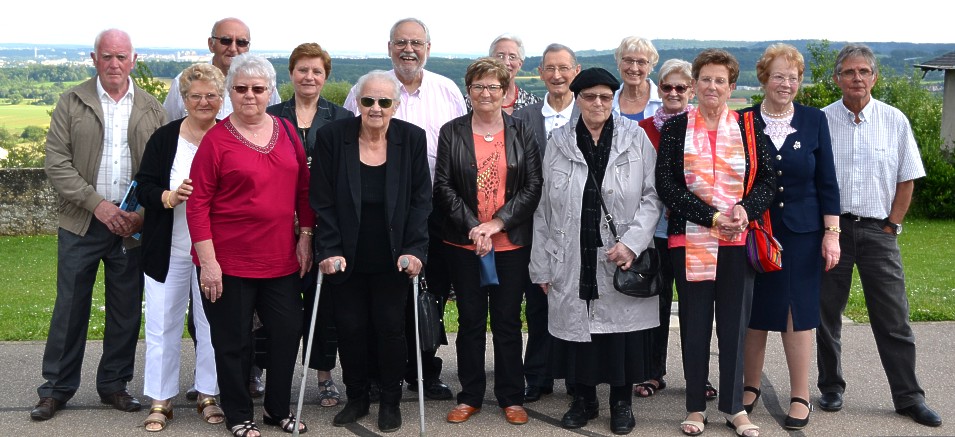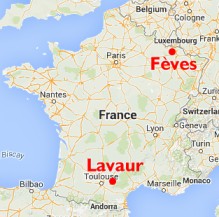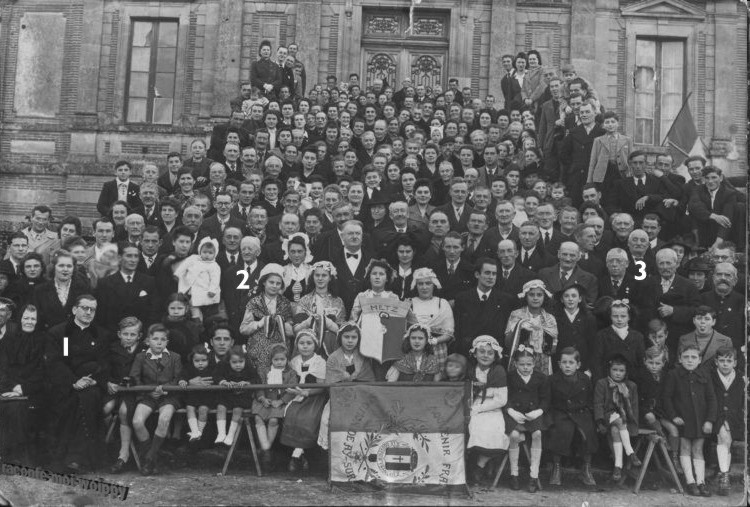About 20 percent is fermented to produce a wine. A fruit brandy is made by then distilling mirabelle wine to raise the
alcohol level.
Due to locally favorable soil and climate conditions, the fruit grows well in the area nearby and a bit to the south.
The approximately one-inch diameter fruit becomes ripe in mid-summer, so the visitors were far too early for the
mirabelle plum festival held in Metz each August.
Mayor Girard walking to the distillery building. The entrance is through the lower doorway.
Mirabelle plum
The distillery operates as a do-it-yourself proposition. People who are interested in making their own brandy are invited
to try their hand.
The village website says:
The current team is ready to welcome any newcomer who meets the terms of its constitution and wants to get into
the magic of distillation to achieve, in moderation of course, his "own drop," which is better than his neighbor's.
Davoli in front of the still
The group then continued south and down along Rue Cotré, east along Rue Quaraille, and then north to the Pracht home for "liquid refreshments."
After, they continued east along Rue Basse to the social/cultural center.
It is a nearly-new facility with several beautiful multi-purpose rooms. But the visitors' attention was drawn to the outside,
where people were playing pétanque. It is a game similar to horseshoes, except metal balls are thrown and a small wood ball
serves as the pin.
Fèvotes playing pétanque
As 4:30 p.m. approached, everyone returned to the school building for a public reception for the visitors. A number of people who were Morganville aid recipients when they were children had arrived. Before the formal program began, a photo was taken with them.
From the left: Mayor René Girard, Jeannine (Baudoin) Prampolini*, Marc Davoli*, Josette (Macchi) Amadoro*, Ginette (Davoli) Stroppolo*, Simone (Watiez) Joly*, Art Vaughan, Solange (Parisot) Torlotting*, Gloria Freeland, Charles Brandt*, Annie (Macchi) Reinhardt*, Thérèse (Mueller) Parisot, widow of Raymond Parisot*, Liliane (Houpert) Cresson*, Lucie (Tresse) Schlater*, Jacqueline (Pierre) Houpert, widow of René Houpert*, Gérard Torlotting.* Names with * were aid recipients. Maiden names are enclosed in ( ).
Mayor Girard began the program with some welcoming remarks. He said that he would not retell the story about how Morganville and Fèves became sister cities as he was sure most everyone there was familiar with it. Instead, he wanted to read a letter written by Simone Joly, one of the people who had been an aid recipient. He paused frequently to allow Pracht to translate his words into English.
Left, Fèvotes listen as, right, Mayor René Girard reads a letter from Simone Joly containing her recollections of the circumstances of the connection between the villages. Pracht translated the mayor's comments and the letter from Joly into English.
Deportation and return Home.
What a surprise the other day to see a picture of people from Fèves in the newspaper - all the young people, or
what was left of them - on the front page.
I was personally deported with my parents to Lavaur in the south of France. We stayed there for 4 years.
Locations of Fèves and Lavaur
Then, after the war, we returned to the village. Our house had been damaged by a shell right next to the entrance
door. There was an enormous hole. We had to stay with my aunt, "Aunt Cecile," as everyone called her.
Then we received parcels from the United States, more precisely from Morganville, Kansas: clothing, food, candies,
etc. ... We had nothing left since everything had been stolen or taken by the Germans.
We had a wooden bed called a "Chalit" [trundle bed] and sacks filled with hay as mattresses. ... We had to start from
scratch. So everyone started to work together. Everyone helped each other then. We were happy to meet again.
These were the good times, despite our misfortune.
Madame Simone Joly
Photo taken in front of the Palace of Justice in Lavaur, France in the spring of 1942. Deportations to Lavaur began in November 1940. 1 - Father Louis Holveck, 2 - Holveck's father, 3 - Mr. Rosati, another citizen of Fèves. Note girls in their Lorraine bonnets.
